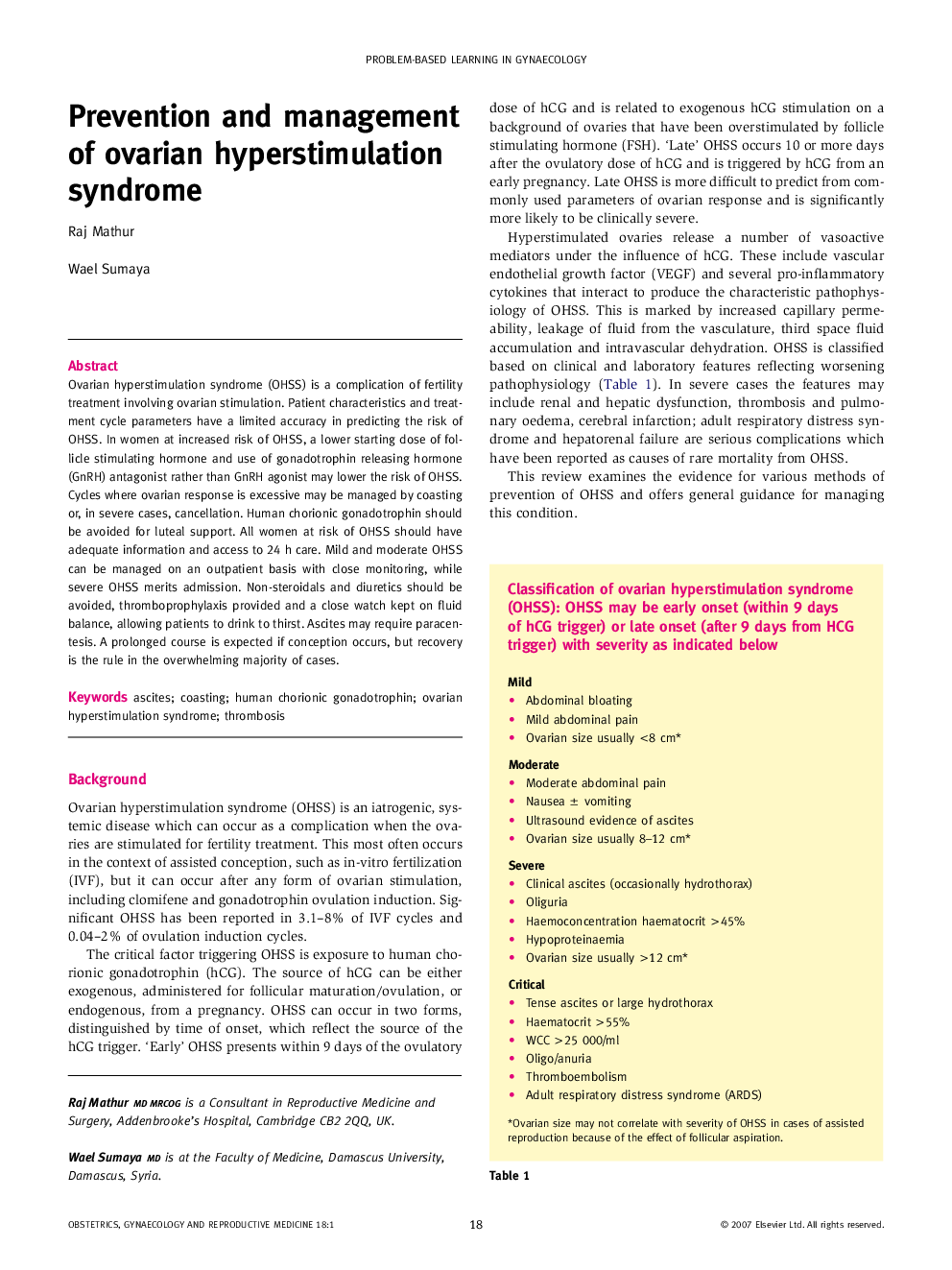| Article ID | Journal | Published Year | Pages | File Type |
|---|---|---|---|---|
| 3967529 | Obstetrics, Gynaecology & Reproductive Medicine | 2008 | 5 Pages |
Abstract
Ovarian hyperstimulation syndrome (OHSS) is a complication of fertility treatment involving ovarian stimulation. Patient characteristics and treatment cycle parameters have a limited accuracy in predicting the risk of OHSS. In women at increased risk of OHSS, a lower starting dose of follicle stimulating hormone and use of gonadotrophin releasing hormone (GnRH) antagonist rather than GnRH agonist may lower the risk of OHSS. Cycles where ovarian response is excessive may be managed by coasting or, in severe cases, cancellation. Human chorionic gonadotrophin should be avoided for luteal support. All women at risk of OHSS should have adequate information and access to 24 h care. Mild and moderate OHSS can be managed on an outpatient basis with close monitoring, while severe OHSS merits admission. Non-steroidals and diuretics should be avoided, thromboprophylaxis provided and a close watch kept on fluid balance, allowing patients to drink to thirst. Ascites may require paracentesis. A prolonged course is expected if conception occurs, but recovery is the rule in the overwhelming majority of cases.
Related Topics
Health Sciences
Medicine and Dentistry
Obstetrics, Gynecology and Women's Health
Authors
Raj Mathur, Wael Sumaya,
